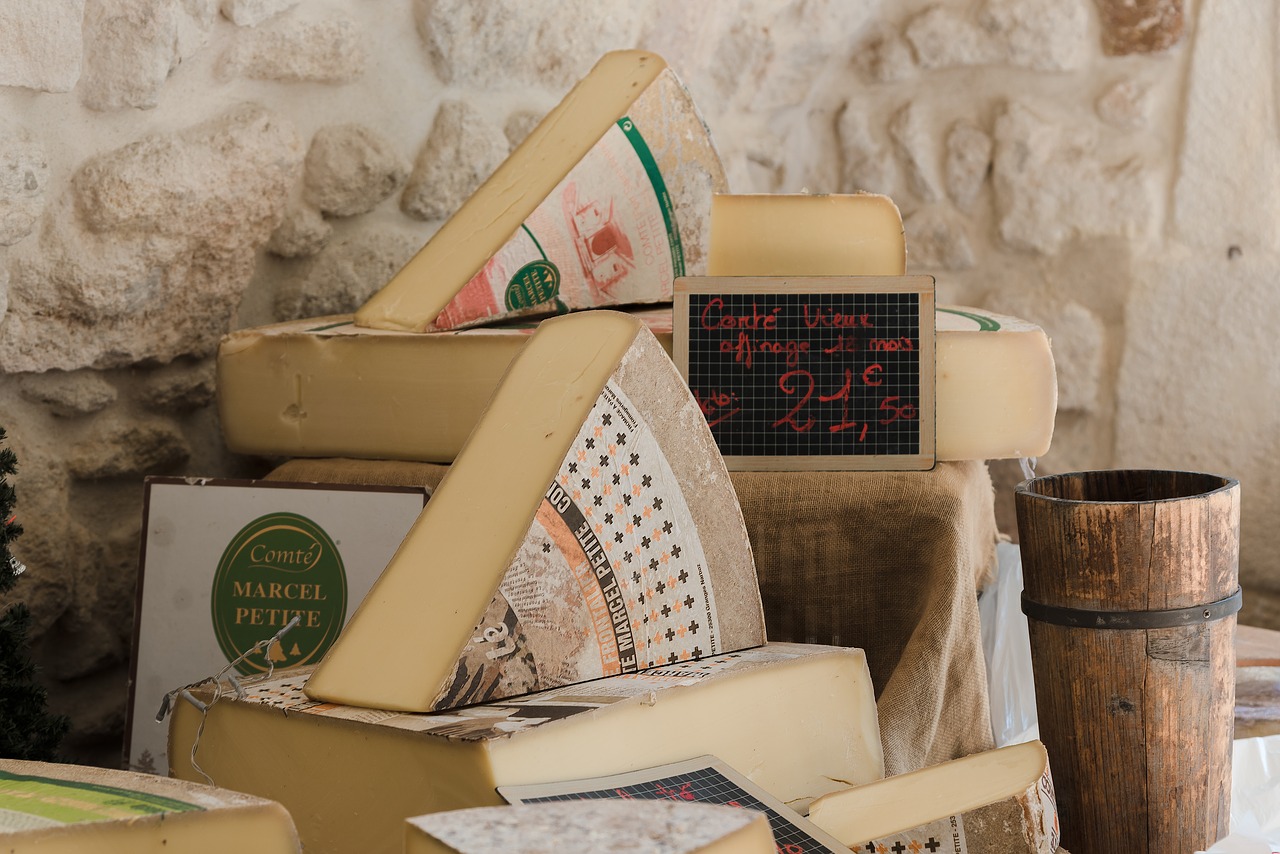Paris’ favorite cheese is Brie, but France’s favorite cheese is Comté.
Not only does this place The Country Boy firmly in the “French but not Parisian” camp (where he will happily remain for as long as we live in Paris, even if that’s the next sixty years), it also goes to show the fact that Parisians, like New Yorkers, identify with their city first and their country second.
While I’m personally partial to Brie (guess that makes me a Parisian), I do get the obsession with Comté. It’s a crowd-pleaser in the way that cheddar is a crowd-pleaser: it tastes more nutty than cheesy, it doesn’t run, it doesn’t stink, and it melts perfectly.
Coyau / Wikimedia Commons /Â
It’s also easy to tailor your Comté purchase to your individual preferences: Comté is sold aged anywhere from six months to 36 months, ranging in flavor from a light, lactic nuttiness to a nearly overwhelming sharpness (which I actually really love).
The reason for the variety in Comté actually comes from the way in which it’s made. Comté was originally created in Alpine regions in order to conserve milk in the cold winter months, when there was no grass for grazing and thus no milk production. Comté and other hard cheeses were made by expelling as much water as possible from the milk solids, thus making them easier to conserve through the winter.
As a result, unlike many other cheeses, which are made to be eaten within several weeks (or up to a couple months) of production, hard cheeses like Comté are actually designed to be stored and aged, thus allowing individual fruitières or Comté-producing cooperatives to experiment with aging the cheeses for different times.
Comté can be eaten plain (TCB can go to town on a block of it with just a knife), but it’s also the ideal cheese for making another Alpine classic, fondue.
And if you like Comté, you’ll probably also like Beaufort and Gruyère, two other pressed hard cheeses from the Alps.


